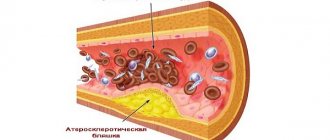What is multiple myeloma?
Being a type of hemoblastosis. myeloma is a malignant tumor. characterized by accelerated growth of plasma cells - cells that produce paraprotein (pathological protein).
The mutation that affects these cells leads to their number in the bone marrow tissue and blood steadily increasing. Accordingly, the amount of paraprotein they synthesize also increases.
The picture shows a bone marrow smear with and without multiple myeloma
The main criterion for the malignancy of myeloma is the number of transformed plasma cells many times higher than normal.
Unlike oncological diseases that have a clear localization (for example, intestinal or ovarian tumors), myeloma is characterized by the presence of cancer cells in several internal organs at once, since they can be carried along with the bloodstream.
- Multiple myeloma develops when the processes of proper development and transformation of B-lymphocytes into cells of the immune system - plasmacytes - are disrupted. At the same time, the process of synthesis of the immunoglobulins they produce (antibodies that help destroy pathogenic viruses and bacteria) is inevitably disrupted.
- Myeloma is a malignant tumor formed by constantly multiplying monoclonal plasma cells, which not only do not die, but divide uncontrollably and synthesize paraproteins. By penetrating (infiltrating) into tissues and internal organs, paraproteins interfere with their normal functioning.
- Multiple myeloma develops mainly in mature (over forty years old) and elderly patients. This disease is not typical for young people. The older the patient, the higher his risk of developing myeloma, and it affects men somewhat more often than women.
- Myeloma grows extremely slowly. The moment of formation of the first plasma cells in bone marrow tissue and the beginning of the formation of tumor foci can be separated by two or even three decades. But after the clinical manifestations of myeloma make themselves felt, it begins to progress sharply. Already two years after this, the vast majority of patients die from numerous complications that developed in those organs and systems that were affected by paraproteins.
Classification
The basis for the classification of multiple myeloma is the clinical and anatomical features of the presence of plasma cells in bone marrow tissue, as well as the specificity of their cellular composition. The division of myeloma into solitary and multiple depends on how many organs or bones are affected by the tumor.
- Solitary myelomas are distinguished by the presence of only one tumor focus, located either in a lymph node or in a bone containing bone marrow.
- Multiple myelomas always affect several bones containing bone marrow. Myeloma most often affects the bone marrow tissue of the vertebrae, shoulder blades, wings of the ilium, ribs, and skull bones. Malignant tumors often form in the central part of the tubular bones of the upper and lower extremities. The spleen and lymph nodes are just as vulnerable.
Depending on the location of plasma cells in the bone marrow, myelomas are:
- diffuse-focal;
- diffuse;
- multifocal.
The cellular composition of myelomas allows them to be divided into:
- plasmacytic;
- plasmablastic;
- polymorphocellular;
- small cell.
What is multiple myeloma?
Science distinguishes two types of myeloma – multiple myeloma and solitary (rare).
Myeloma (multiple myeloma) is the proliferation of mature differentiated blood plasma cells, with increased production of monoclonal antibodies (immunoglobulins), leakage (infiltration) of the bone marrow, osteomyelitis (bone destruction) and deficiency of the human immune system.
Multiple myeloma (myeloma disease), so-called Rustitsky-Kahler disease, is a malignant tumor of the body's blood cells. The bone marrow is affected, from where it spreads throughout the human body. It is necessary to diagnose cancer.
Myeloma is a tumor disease of the organs responsible for hematopoiesis. People aged 50–70 years and the middle age category are affected.
The disease is rare. In the pathology of oncological diseases it occupies 3%; everyone is affected to the same extent, regardless of gender.
Based on the number of affected bones or organs, myelomas are divided into multiple and solitary (rare). It is possible to identify differences if you do a blood test for oncology.
Causes
Like most cancers. The true causes of multiple myeloma have not yet been established. The nature and extent of the influence of pathogenic factors on the transformation of damaged cells is equally poorly studied.
Doctors suggest that the main causes of myeloma can be considered:
- Genetically determined predisposition. This disease often affects very close relatives (identical twins often suffer from it). All attempts to identify oncogenes that provoke the development of the disease have so far been unsuccessful.
- Long-term exposure to chemical mutagens (as a result of inhalation of mercury vapor and household insecticides, asbestos and benzene-based substances).
- Exposure to all types of ionizing radiation (protons and neutrons, ultraviolet, x-rays and gamma rays). Among the population of Japan that survived the tragedy of Hiroshima and Nagasaki, myeloma is extremely common.
- The presence of chronic inflammation, requiring a long-term immune response from the patient’s body.
Stages
The volume of the lesion and the severity of the course allow us to distinguish three stages of myeloma. At the first stage, the tumor process fits into the following parameters:
- The blood contains a sufficient amount of calcium.
- The hemoglobin concentration level exceeds 100 g/l.
- There are still some paraproteins in the blood.
- Bence Jones protein is present in urine in a very small concentration (no more than 4 g per day).
- The total mass of myeloma does not exceed 600 g per square meter.
- There are no signs of osteoporosis in the bones.
- The tumor focus is located in only one bone.
The third stage of myeloma is characterized by the presence of the following parameters:
- The hemoglobin content in the blood is less than 85 g/l.
- The calcium content in 100 ml of blood exceeds 12 mg.
- Tumor foci have involved three bones (or more) at once.
- The blood contains very high levels of paraproteins.
- The concentration of Bence Jones protein is very high (over 112 g per day).
- The total mass of cancer tissue is more than 1.2 kg.
- An x-ray shows the presence of osteoporosis in the affected bones.
The doctor determines the second degree of myeloma, the indicators of which are higher than in the first, but do not reach the third, by the method of exclusion.
Features of the development and course of myeloma
The onset of multiple myeloma occurs in the bone marrow after exposure to certain negative factors on the human body. Under their influence, the DNA of blasts, which have received a program for further development into B-lymphocytes, white blood cells, or immune cells, is disrupted. Subsequently, these protective cells enter the bloodstream, spleen and lymphatic systems, where, under the influence of foreign cells, they are fully matured into plasma cells, blood cells, the purpose of which is to fight a specific infectious agent.
Normally, the number of plasma cells in the human body is strictly limited, but under negative endogenous or exogenous influences, the functioning of this part of the hematopoietic organs malfunctions, leading to the occurrence of myeloma.
The features of its formation and further development are as follows:
- The DNA of plasma cells is damaged, as a result of which they acquire pronounced signs of atypia - the inability to perform the functions assigned to them, a tendency to uncontrolled division and loss of the ability to natural self-destruction.
- The changed plasma cells are called myelocytes. They accumulate in the hematopoietic organs, lymphatic and circulatory systems in excess quantities, and instead of protective elements, they produce defective monoclonal Bence-Jones proteins, the damage of which to bone tissue leads to its destruction.
- As a result of this negative process, normal blood cells in the blood are suppressed and almost completely disappear, and the level of calcium, which is excreted from the body through the kidneys, causing serious damage to their parenchyma, increases.
Worth knowing! Myeloma, as a rule, develops very slowly - from the moment the cell mutation begins to the appearance of the first specific signs characteristic of this type of cancer, it usually takes more than 20 years. But if there is no adequate therapy, the disease will become aggressive, transient and will lead to death in the shortest possible time.
Organ damage and symptoms
Multiple myeloma primarily affects the immune system, kidney tissue, and bones.
Symptoms are determined by the stage of the disease. At first, it may be asymptomatic.
As the number of cancer cells increases, myeloma manifests itself with the following symptoms:
- Aching pain in the bones. Cancer cells lead to the formation of voids in bone tissue.
- Pain in the heart muscle, tendons and joints. caused by the deposition of paraproteins in them.
- Pathological fractures of the vertebrae, femurs and ribs. Due to the large number of voids, the bones become so fragile that they cannot withstand even minor loads.
- Decreased immunity. The bone marrow affected by the disease produces such a small number of leukocytes that the patient’s body is not able to protect itself from the effects of pathogenic microflora. As a result, the patient suffers from endless bacterial infections - otitis media, bronchitis and tonsillitis.
- Hypercalcemia. The destruction of bone tissue leads to calcium entering the blood. In this case, the patient develops constipation, nausea, abdominal pain, weakness, emotional disturbances and lethargy.
- Myeloma nephropathy is a violation of the proper functioning of the kidneys. Excess calcium leads to the formation of stones in the kidney ducts.
- Anemia. Damaged bone marrow produces fewer and fewer red blood cells. As a result, the amount of hemoglobin, which is responsible for delivering oxygen to cells, also decreases. Oxygen starvation of cells manifests itself in severe weakness and decreased attention. At the slightest exertion, the patient begins to suffer from palpitations, headaches and shortness of breath.
- A blood clotting disorder. In some patients, plasma viscosity increases, due to which spontaneously sticking red blood cells can form blood clots. Other patients whose blood platelet count has sharply decreased suffer from frequent nose and gum bleeding. When the capillaries are damaged in such patients, subcutaneous hemorrhages occur, manifested in the formation of a large number of bruises and bruises.
Treatment of multiple myeloma
The choice of treatment and its volume depend on the stage (extension) of the process. In 10% of myeloma patients, the disease progresses slowly over many years, rarely requiring antitumor therapy. In patients with solitary lean plasmacytoma and extramedullary myeloma, local radiation therapy is effective. In patients with stages 1A and 11A, a wait-and-see approach is recommended, since some of them may have a slowly developing form of the disease.
If there are signs of an increase in the tumor mass (the appearance of pain, anemia), it is necessary to prescribe cytostatics. Standard treatment is to use
- melphalan (8 mg/m2),
- cyclophosphamide (200 mg/m2 per day),
- chlorbutine (8 mg/m2 per day) in combination with prednisolone (25–60 mg/m2 per day) for 4–7 days every 4–6 weeks.
The effect of using these drugs is approximately the same, but cross-resistance may develop. With sensitivity to treatment, a decrease in bone pain, a decrease in calcium levels in the blood, and an increase in blood hemoglobin levels are usually quickly observed; a decrease in the level of serum M component occurs 4–6 weeks from the start of treatment in proportion to the decrease in tumor mass. There is no consensus regarding the timing of treatment, but it is generally continued for at least 1–2 years if effective.
In addition to cytostatic therapy, treatment is carried out aimed at preventing complications. To reduce and prevent high calcium levels in the blood, glucocorticoids are used in combination with plenty of fluids. To reduce osteoporosis, vitamin D, calcium and androgens are prescribed, and allopurinol is prescribed to prevent kidney damage with sufficient drinking regimen. In case of acute renal failure, plasmapheresis is used together with hemodialysis. Plasmapheresis may be the treatment of choice for hyperviscosity syndrome. Severe bone pain may be relieved by radiation therapy.
Laboratory diagnostics
Diagnosis of multiple myeloma begins with a preliminary medical examination. When collecting anamnesis, the specialist questions the patient in detail about existing complaints and features of the clinical picture, not forgetting to clarify the time of their appearance.
This is followed by the stage of mandatory palpation of painful areas of the body with a series of clarifying questions about whether the pain is intensifying and whether it is being transmitted to other parts of the body.
After collecting anamnesis and coming to the conclusion about the possibility of multiple myeloma, the specialist prescribes the patient a number of diagnostic tests:
- X-ray of the chest and skeleton.
The photo shows an x-ray of the arm bone showing multiple myeloma.
- Magnetic resonance and computed tomography (spiral).
- Aspiration of bone marrow tissue necessary to create a myelogram.
- Laboratory urine analysis (according to Zimnitsky and general). The Zimnitsky analysis allows you to track the daily dynamics of protein loss in urine. A urine test for Bence Jones protein is carried out to ensure that the diagnosis is correct, since the urine of a healthy person does not contain it.
- Bence Jones proteins can also be detected during the immunoelectrophoresis procedure.
Blood analysis
- To assess the general condition of the hematopoietic system, a general analysis of 1 ml of blood is performed. taken from a vein or finger. The presence of multiple myeloma will be indicated by: an increase in ESR, a significant decrease in the content of hemoglobin, red blood cells, reticulocytes, platelets, leukocytes and neutrophils, but the level of monocytes will be increased. An increase in the total amount of proteins is achieved due to the content of paraproteins.
- To assess the functioning of individual systems and organs, a biochemical blood test is performed. taken from a vein. The diagnosis of multiple myeloma is confirmed by a set of blood parameters, including: increased levels of total protein, urea, creatinine, uric acid, calcium with a decrease in albumin levels.
Treatment options
- The leading method of treating myeloma is chemotherapy, which consists of taking high doses of cytotoxic drugs.
- After effective chemotherapy, patients undergo transplantation of donor or own stem cells.
- When the effectiveness of chemotherapy is low, radiation therapy methods are used. Exposure to radioactive rays does not heal the patient, but for some time it can significantly alleviate his condition, moreover, increasing his life expectancy.
- Excruciating pain in the bones is relieved with the help of painkillers.
- Infectious diseases are treated with high doses of antibiotics.
- Hemostatic agents (such as vikasol and etamzilate) will help cope with bleeding.
- Tumors that compress internal organs are removed surgically.
Stem cell transplant
If chemotherapy is successful, the patient is transplanted with his own stem cells. A puncture is performed to collect bone marrow. Having isolated stem cells from it, they are reintroduced into the patient’s body. With the help of this manipulation, it is possible to achieve stable remission, during which the patient feels healthy.
Diet food
- The diet for multiple myeloma should be low in protein. The daily amount of protein consumed should not exceed 60 g.
- Beans, lentils, peas, meat, fish, nuts, and eggs should be consumed in extremely small quantities.
- All other products that are well accepted by the patient can be safely included in the diet.
Treatment
Today, treatment of multiple myeloma involves its control. A cure, at least a potential one, can only be discussed with a bone marrow transplant.
Plasmacytoma is a well-controlled disease; with early detection and proper treatment, long-term remission is possible. The initial stages of smoldering forms of the disease do not require immediate intervention. Conversely, the last stage requires rapid and intensive therapy to prolong the patient’s life.
Treatment of Rustitsky-Kahlen disease involves:
- Initial therapy.
- Supportive.
- Treatment of relapses and persistent forms.
The main method of treatment is chemotherapy (monochemotherapy, polychemotherapy). But this does not exclude the use of other methods:
- Stem cell transplantation (auto- and alletransplantation, that is, transplantation of one’s own or donor cells).
- Surgical intervention.
- Radiation therapy.
- Symptomatic measures.
Let's look at these treatment methods in more detail.
Operation
Surgery is performed when there is compression of internal organs or the spinal cord, which leads to severe disruption of the functioning of internal organs.
For spinal cord compression, lamyectomy (removal of the vertebral arch) and kyphoplasty in combination with Dexamethasone treatment are practiced. In the case of a localized lesion (with solitary myeloma), surgery is also recommended, this time to remove the tumor.
Irradiation
The use of radiation therapy may be justified in cases of limited bone tissue lesions and high tumor resistance to chemotherapeutic agents. It is also recommended as palliative measures (maintaining quality of life) in patients who cannot take chemotherapy.
In what cases is radiation therapy prohibited:
- In severe renal failure.
- In older people.
- Physically weakened patients.
This method is often used to treat a pathological process localized in the facial bones of the skull.
Treatment of symptoms
Symptomatic therapy is designed to improve the patient’s quality of life and, if possible, eliminate the consequences of the tumor. It includes orthopedic care, medications: analgesics, hemostatics, drugs for correcting hypercalcemia. For acute anemia - erythropoietin or red blood cell transfusion.
Modern chemotherapy
It involves the use of several drug options for the treatment of generalized plasmacytomas. In some cases, one remedy is used, in others a combination of them is used.
The main medications are:
- Drugs for the treatment of multiple myeloma.
- Corticosteroids.
- Apoptosis inducers (drugs that trigger the self-destruction mechanism of tumor cells).
- Agents that stimulate immune cells and inhibit tumor cells.
Specific drugs for the treatment of plasmacytoma (Melphalan) are used as monotherapy or in combination with corticosteroids (Prednisolone). They are effective only in half of the cases.
Alkating cytostatics (Cyclophosphamide) give good results in combination therapy with the latest antitumor drugs and hormones. Their mechanism of action is based on the addition of a certain group to DNA, which is called alkyl. This prevents the altered cell from dividing and slows down the growth of the tumor.
Apoptosis inducers (Bortezomib) are used either alone or in combination with an antitumor agent and cortecosteroids. Its use does not eliminate the need for transplantation.
New cytostatics (Lenalidamide) combine antitumor properties with the ability to stimulate the body's immune cells. Their use in combination with hormones and alkalizing agents gives quite good results.
Treatment with Lenalidamide with other drugs extends the patient’s life by 4–5 years, while life expectancy with standard therapy averages from 1.5 to 3.5 years.
Thalidomide is considered a popular means of controlling generalized plasmacytomas. This drug is aimed at inhibiting pathological angiogenesis (the growth of blood vessels through the tumor, the formation of the oncological tissue’s own blood supply system). Good results are obtained by using Thalidomide with standard chemotherapy regimens.











